I leave the draft grades to Mel Kiper Jr. every year, but once again I've gone through and identified the best value pick for each of the 32 teams in the 2018 NFL draft.
Remember: "Best pick" does not necessarily mean "best player." I'm taking into account team needs, the value a player presented in comparison to my board and any trades related to the pick.
I'll have a file on my favorite draft classes out on Tuesday.
Note: Teams are listed in alphabetical order. To quickly get to your team, click on the links below.
ARI | ATL | BAL | BUF | CAR | CHI | CIN | CLE | DAL | DEN | DET | GB | HOU | IND | JAC | KC | LAC | LAR | MIA | MIN | NE | NO | NYG | NYJ | OAK | PHI | PIT | SF | SEA | TB | TEN | WAS
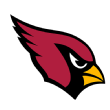
Arizona Cardinals
Josh Rosen, QB, UCLA (pick No. 10)
Arizona's top need coming into the draft was at quarterback, as free-agent signing Sam Bradford simply hasn't been able to stay on the field in his career. The Cardinals did have to give up a third- and fifth-round pick to move up from 15 to 10 to get him, but earlier in the process it seemed as if they would've needed to get to No. 2 overall to land Rosen. He doesn't have the biggest arm, but Arizona will surround him with weapons (drafted WR Christian Kirk, RB Chase Edmonds) and he has the ability to process information quickly and dissect defenses at the highest level. And he comes into the league with a major chip on his shoulder.

Atlanta Falcons
Calvin Ridley, WR, Alabama (No. 26)
Atlanta had more pressing needs than wide receiver, but when the draft's No. 1 wideout falls into your lap, you have to pounce. Ridley is the best route runner in this class, and while his athletic measurements at the combine were subpar (31-inch vertical, 9-foot, 2-inch broad jump), he consistently wins in one-on-one coverage and gains separation. The Falcons will be able to use him outside and in the slot, and he should get a lot of single coverage with Mohamed Sanu and Julio Jones alongside him.

Baltimore Ravens
Hayden Hurst, TE, South Carolina (No. 25)
This was classic Ozzie Newsome. Few, if any, GMs have managed the NFL draft better than Newsome the past two decades, and he was in prime form again throughout Round 1. Baltimore traded back twice (from 16 to 22 to 25), picked up an extra third-rounder (TE Mark Andrews) and fourth-rounder (WR Jaleel Scott) and still got my top tight end in Hurst. Then Newsome used one of those picks and a 2019 second-rounder (sorry, Eric DeCosta!) to move back up and land a potential franchise quarterback in Lamar Jackson. While he is 25 years old already, Hurst is a classic flex tight end and will be Joe Flacco's safety blanket ... before he's Jackson's best friend. Another great job by Newsome.
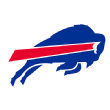
Buffalo Bills
Tremaine Edmunds, OLB, Virginia Tech (No. 16)
After moving up to get its potential franchise QB in Josh Allen at No. 7, Buffalo leveraged its third-round pick from dealing Tyrod Taylor to move up again from 22 to 16 and land Edmunds, whom I had 12th on my board. Head coach Sean McDermott has a rich history from Carolina of having athletic linebackers that can cover, and Edmunds fits that mold. Only 19 years old, Edmunds ran a 4.54 40-yard dash at 6-4, 259, at the combine and has one of the best toolboxes of any prospect in this class. He's an immediate upgrade for Buffalo's linebacking corps.
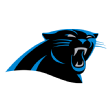
Carolina Panthers
Ian Thomas, TE, Indiana (No. 101)
The Panthers continue to surround Cam Newton with weapons, landing speedy WR D.J. Moore in the first round and Thomas with the first pick of the fourth round. Thomas has upside as a flex tight end and is a good blocker inline already. He has overcome a lot to make it to this point, losing both of his parents and being raised by older siblings (he's one of eight) since he was 9 years old. He played two years at Nassau Community College before transferring to Indiana. He'll have a good opportunity to learn behind starting TE Greg Olsen, who might not have many years left.
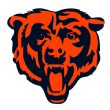
Chicago Bears
James Daniels, C, Iowa (No. 39)
I love what the Bears did early in this draft, taking Roquan Smith at 8 and trading up to 51 to add a dynamic wide receiver (Anthony Miller) for Mitchell Trubisky, but Daniels is the best value here. My 18th-ranked overall prospect, Chicago grabbed him at 39. Daniels played mostly at center for Iowa, but might start at guard with Cody Whitehair already manning that spot. Regardless, Daniels is a young (only 19 years old) and athletic interior offensive lineman who should contribute right away. Love this pick.

Cincinnati Bengals
Mark Walton, RB, Miami (FL) (No. 112)
The Bengals haven't quite found the right mix at running back, despite spending some high draft capital -- Giovani Bernard (2013, second), Jeremy Hill (2014, second) and Joe Mixon (2017, second) -- at the position in recent years. I had Walton as my ninth-ranked RB in this class, but a season-ending ankle injury hurt his stock. There were several people I spoke with at the Miami program who believed he was the best athlete on the team, and if he can recover fully, he'll be a nice change-of-pace back in Cincinnati with some upside. I liked the third-round picks of Jessie Bates III and Sam Hubbard as well.

Cleveland Browns
Nick Chubb, RB, Georgia (No. 35)
Some might question Cleveland's Day 1 haul of Baker Mayfield (No. 1 overall) and Denzel Ward (No. 4), but there's no questioning this pick. One of my colleague Louis Riddick's favorite players in the draft, Chubb has terrific lateral agility as a runner and just crushed the combine (4.52 40, 38-inch vertical jump, 10-foot, 8-inch broad jump). My third-ranked RB was available here only because he tore three ligaments in his left knee in 2015. He'll be a nice rotational back with free-agent signing Carlos Hyde.
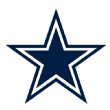
Dallas Cowboys
Connor Williams, G, Texas (No. 50)
Despite having three Pro Bowl players along the offensive line, Dallas hadn't drafted an O-lineman since 2015 (Chaz Green) -- and guard was a need area. Williams was a left tackle at Texas, but short arms (33 inches) probably will bump him inside for the Cowboys. A left knee injury forced him to miss most of the 2017 season, but he's solid in pass protection and an effective run-blocker. The Cowboys want to get back to running the ball behind Ezekiel Elliot to set up play-action. Williams, my 37th-ranked player, will help immediately.
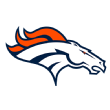
Denver Broncos
Bradley Chubb, DE, NC State (No. 5)
This was a dream scenario for the Broncos, with two quarterbacks going in the top four and the Browns surprising many by taking CB Denzel Ward. Denver was looking to trade down to 12 with Buffalo, but Chubb was too good to pass up at No. 5. Chubb is my second-ranked player and the most complete defensive player in the draft. When Denver won the Super Bowl, it was on the back of a terrific defense led by an elite pass rush. The Broncos are a step closer to recreating that magic now.
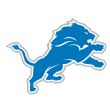
Detroit Lions
Frank Ragnow, C, Arkansas (No. 20)
I didn't love some of Detroit's later picks -- especially at the cost -- but Ragnow is a good fit. Detroit lost center Travis Swanson, so Ragnow can plug in at center and move Graham Glasgow to left guard. A late riser, you know exactly what you're getting with him -- a high I.Q. leader who can take charge of the huddle and make the proper calls. And that's vital for a Lions team that must keep Matthew Stafford upright. An ankle injury cut short Ragnow's 2017 season, but otherwise durability isn't a concern for the three-year starter. I also liked the pick of Tyrell Crosby in the fifth round and it wouldn't shock me if he contributes.
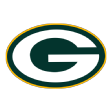
Green Bay Packers
Jaire Alexander, CB, Louisville (No. 18)
I had originally heard Green Bay was willing to take Alexander at No. 14, so the Packers managed the board very well here, grabbing a 2019 first-round pick from New Orleans and still getting their guy. The Packers have spent a lot of recent draft capital in the secondary but haven't hit on many picks. Alexander was a late riser in this process, and is an excellent cover corner with good speed and competitiveness. His biggest knock is durability as he missed eight games in three seasons because of injuries.

Houston Texans
Justin Reid, S, Stanford (No. 68)
Remember that Houston was without a pick in the first two rounds from moving up for Deshaun Watson and trading away Brock Osweiler. Given those limitations, new GM Brian Gaine did a great job maximizing value. Reid is a fringe first-round talent at safety, who will provide good depth and is an athletic ball hawk. Safety wasn't a pressing need, but Reid was too good a player to pass up at 68. I also really liked the pick of OG Martinas Rankin, who should be the starter on the interior for an offensive line that needs help, and TE Jordan Akins, an athletic move tight end. Really nice job by the Texans.
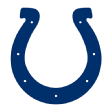
Indianapolis Colts
Quenton Nelson, G, Notre Dame (No. 6)
The bottom line is the Colts have to protect Andrew Luck -- nothing else really matters. The Colts were able to get trade down from No. 3 to get Nelson at No. 6, while also collecting two second-round picks, which turned into another guard (Braden Smith, Auburn) and a much-needed pass-rusher (Kemoko Turay, Rutgers). Yes, it's a guard at No. 6 overall, but the value is there because of the extra picks and since Nelson is one of the top three players in this class.

Jacksonville Jaguars
Taven Bryan, DT, Florida (No. 29)
Jacksonville did a great job getting value from all four of its picks in Rounds 1-4, but Bryan was No. 21 on my board. When teams prioritize the best player available over need, it generally works -- and this is another example. Jacksonville has an elite defense (especially its defensive line), but we just saw in Philadelphia how valuable a deep D-line rotation can be over the course of a season. Bryan has elite first-step quickness and outstanding short-area explosiveness. He needs some refinement, but he will create disruption for offenses while he learns better technique. A strength for Jacksonville becomes stronger.
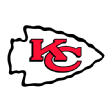
Kansas City Chiefs
Derrick Nnadi, DT, Florida State (No. 75)
Kansas City is obviously trying to get younger and rebuild its defense, as all six of its 2018 draft picks were on that side of the ball. Help was needed in the middle of the D-line after Bennie Logan's departure and Nnadi is a good football player who was hurt by a bad combine. He's a much better football player than tester. While not a three-down player, he should be able to help at the nose tackle spot in the Chiefs' 3-4 scheme and is NFL ready right now.
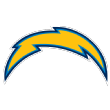
Los Angeles Chargers
Derwin James, S, Florida State (No. 17)
Gus Bradley's defense needs a long, playmaking safety -- a guy who can come up and fill one side in run support and essentially is another linebacker. As one of the most versatile prospects I've ever evaluated, James fits that bill. I thought he could go as high as No. 7 to Tampa Bay, so getting my seventh-ranked player at 17 is tremendous value. Los Angeles college scouting director Kevin Kelly is underrated and has done a great job for several years helping in the draft for this team.

Los Angeles Rams
Obo Okoronkwo, OLB, Oklahoma (No. 160)
The Rams' draft is filled with several lottery tickets, but remember that many of their picks this year were used to trade for impact veterans (Brandin Cooks, Marcus Peters, Aqib Talib). I had Okoronkwo as the 95th-best player in this draft, so to get him at 160 is definitely a good value. He's not a great test, but a good football player and a relentless pass-rusher. For a team that still needs edge pass-rushing help, I liked this pick.
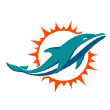
Miami Dolphins
Jerome Baker, OLB, Ohio State (No. 73)
Miami has been getting killed in underneath coverage year after year, and needed a cover linebacker in the worst way. Instead of giving up picks, the Dolphins were patient and got a player in the third round who could've gone in the second. Baker is today's NFL linebacker (4.53 40-yard dash at combine). He's not going to take on blocks, but he can cover running backs and tight ends, and work sideline to sideline. Great pick for Miami.

Minnesota Vikings
Mike Hughes, CB, UCF (No. 30)
I know Hughes comes with character issues, but I think he's the second-best cover corner in this class. There were offensive guards the Vikings could've taken at No. 30 -- and that's probably their biggest need -- but GM Rick Spielman continues to take the best player available, and it has worked well for this team. In Mike Zimmer's system, you can never have too many corners. This pick gives Minnesota some insurance if it doesn't want to give a big extension to Trae Waynes after this season.
By moving back from pick 94 to 102, the Vikings also got a good developmental upside player in Jalyn Holmes and another sixth-round pick that they used to move back up into the fifth round and take the best kicker in the draft (Daniel Carlson). I really love this move, especially with how much heartbreak Minnesota fans have had from the kicking game. Carlson is clutch.
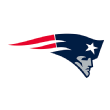
New England Patriots
Sony Michel, RB, Georgia (No. 31)
Like usual, the Patriots did an excellent job of maneuvering in the draft and turning picks into more picks, including landing a 2019 third-rounder from Detroit and 2019 second-round pick from Chicago. As for Michel, he's the type of versatile running back New England covets. Basically a bigger, better version of Dion Lewis, Michel excelled in a rotational role in Georgia and should be kept fresh in New England as well.
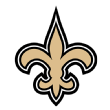
New Orleans Saints
Natrell Jamerson, S, Wisconsin (No. 164)
Just like the Saints did with Alvin Kamara last year, I think this is a steal. Jamerson had 51 tackles and 10 pass breakups last season, but I really love his special-teams ability. I talked to some teams who said he was the special-teams player in the entire draft. He can cover kicks, return kicks, be a jammer and a gunner -- you want it, he can do it. A heck of a football player.

New York Giants
Will Hernandez, G, UTEP (No. 34)
The Giants are clearly trying to get back to a power running game, something new GM Dave Gettleman had in Carolina. Hernandez is a perfect fit as a big (6-2, 327), nasty mauler in the run game. He blocks to the echo of the whistle and won't be any fun for NFC East opponents to line up against twice a year, as he's opening up holes for No. 2 overall pick Saquon Barkley. He was is a nice value as the second pick in Round 2, as I had him 25th on my board.
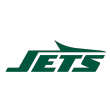
New York Jets
Sam Darnold, QB, USC (No. 3)
New York's team needs read like an offensive depth chart before the draft, but it all starts with the QB. This was the ideal scenario for the Jets, who traded up from No. 6 to No. 3 and probably thought they were ending up with Baker Mayfield or Josh Allen, at best. Instead, Darnold (whom I was told was their top choice) fell into their lap, and Jets fans have hope for the future. Darnold is the youngest quarterback in the first round, and has been my favorite QB throughout the process. A magician in the pocket, Darnold has the even-keeled demeanor to succeed in New York, a good mentor in Josh McCown, and a great offensive coordinator in Jeremy Bates. Don't think they won't hold it over the Giants for passing on him at No. 2 as well if Darnold turns into a star.
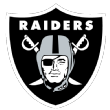
Oakland Raiders
Mo Hurst, DT, Michigan (No. 140)
Hurst dropped strictly because of a heart condition found during the medical checks at the combine, and was taken off of several teams' boards as a result. But at pick 140 in the fifth round, the reward outweighs the risk. A perfect fit as a three-technique in Oakland's 4-3 scheme, Hurst can get up the field, penetrate and disrupt. Even if Oakland has to limit him because of the medical issue, it's still getting a really productive player and filling a big need. Of all the Michigan defensive line players drafted last season, I thought Hurst was the most disruptive. This could end up being one of the steals of the draft.

Philadelphia Eagles
Dallas Goedert, TE, South Dakota State (No. 49)
The Super Bowl champions don't have many needs, so I liked that they moved back from 32 to 52, picking up Baltimore's 2019 second-round pick. One of their biggest needs was depth at tight end with Trey Burton gone to Chicago, and Goedert is a perfect fit. A rare two-way tight end who can both block inline and is fast enough to stretch the seam in the passing game, Goedert is an ascending player --164 of his 198 career catches at South Dakota State were in the past two seasons. It also didn't hurt that the Eagles traded up ahead of the Dallas Cowboys at No. 49 -- a team that was desperate for a tight end with Jason Witten planning to retire -- to grab him.

Pittsburgh Steelers
James Washington, WR, Oklahoma State (No. 60)
The Steelers traded away one malcontent in Martavis Bryant and replaced him with Washington. Though Washington isn't as big or fast as Bryant, he's a young, hungry receiver who can track the deep ball well and is very athletic. Not only was this a good pick where Pittsburgh got him (ranked No. 50 on my board), but it's a dream come true for a rookie receiver. Washington should thrive with the attention paid to Antonio Brown and JuJu Smith-Schuster.
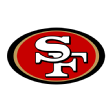
San Francisco 49ers
Fred Warner, ILB, BYU (No. 70)
This pick is all about insurance for Reuben Foster's off-field situation. Warner is athletic enough to develop above-average man cover skills and has the active hands and change-of-direction skills to threaten off the edge as a pass-rusher. He does need to improve his tackling, but I think he has the potential to be an NFL starter. A smart pick in a sudden need area for San Francisco.

Seattle Seahawks
Jamarco Jones, OT, Ohio State (No. 168)
Seattle has a desperate need at offensive line -- stop me if you're heard that before -- so I didn't love that the Seahawks waited until the fifth round to address it. However, Jones was a fringe third-rounder (No. 108 on my board) and was efficient in college, even if it wasn't always pretty. Right tackle Germain Ifedi led the NFL with 16 penalties last season, so there's a chance Jones pushes for the starting job.
I'd be remiss not to mention Shaquem Griffin as well. I got to know him during the season covering a couple of UCF games and no one has been in his camp for longer than I have -- I'm just going on the value of where they got Jones. The punter Michael Dickson is a stud as well -- he has All-Pro potential.

Tampa Bay Buccaneers
Vita Vea, DT, Washington (No. 12)
If you don't like the position the Bucs picked, I understand; there were other several positions of greater need -- including safety (ahem, Derwin James). But I actually think Vea complements Gerald McCoy well, and all of a sudden Tampa Bay's defensive line (which had an NFL-low 22 sacks in 2017) looks formidable. And this ultimately comes down to whether you'd rather have a player like Minkah Fitzpatrick or Vea, Carlton Davis, M.J. Stewart and Jordan Whitehead. Given Tampa Bay's need for secondary help, I'd definitely choose the latter. Tampa Bay's move down from No. 7 to No. 12 is one of the most underrated moves in this year's draft.
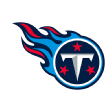
Tennessee Titans
Rashaan Evans, ILB, Alabama (No. 22)
I like Harold Landry in the second round as well, even though Tennessee gave up a third-rounder to move up and get him, but I'm going with Evans because he can be the off-ball linebacker the Titans need. Tennessee had five picks in the first three rounds last year, so this draft was about quality over quantity. I'm usually not a fan of moving up (as the Titans did twice), but their two biggest needs were edge rusher and inside linebacker -- and they knew Evans was going to New England at 23 if they didn't move ahead of the Patriots. It doesn't hurt that new head coach Mike Vrabel will be able to coach them up.

Washington Redskins
Derrius Guice, RB, LSU (No. 59)
The Redskins managed to move back in the second round from No. 44 to No. 59 and still grab Guice, who has star potential if they can keep him on the straight and narrow. He was a late first-round talent whom they got at the end of the second. The third-rounder they picked up turned into Geron Christian, an offensive tackle who has starter potential if developed properly. He can also shift inside to guard if needed.
